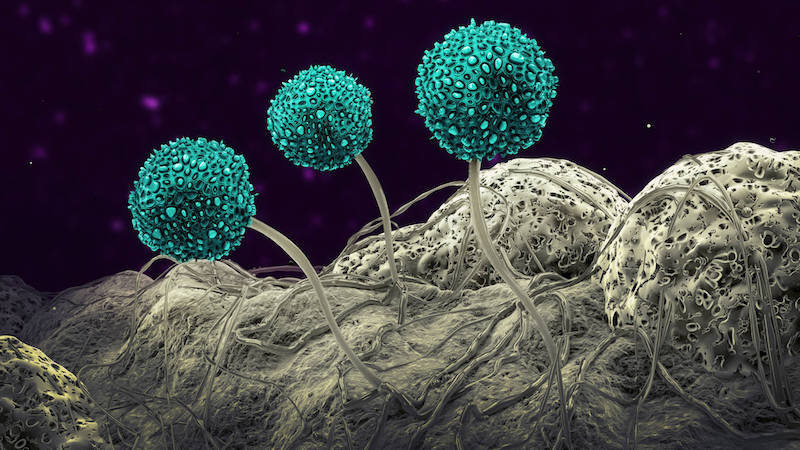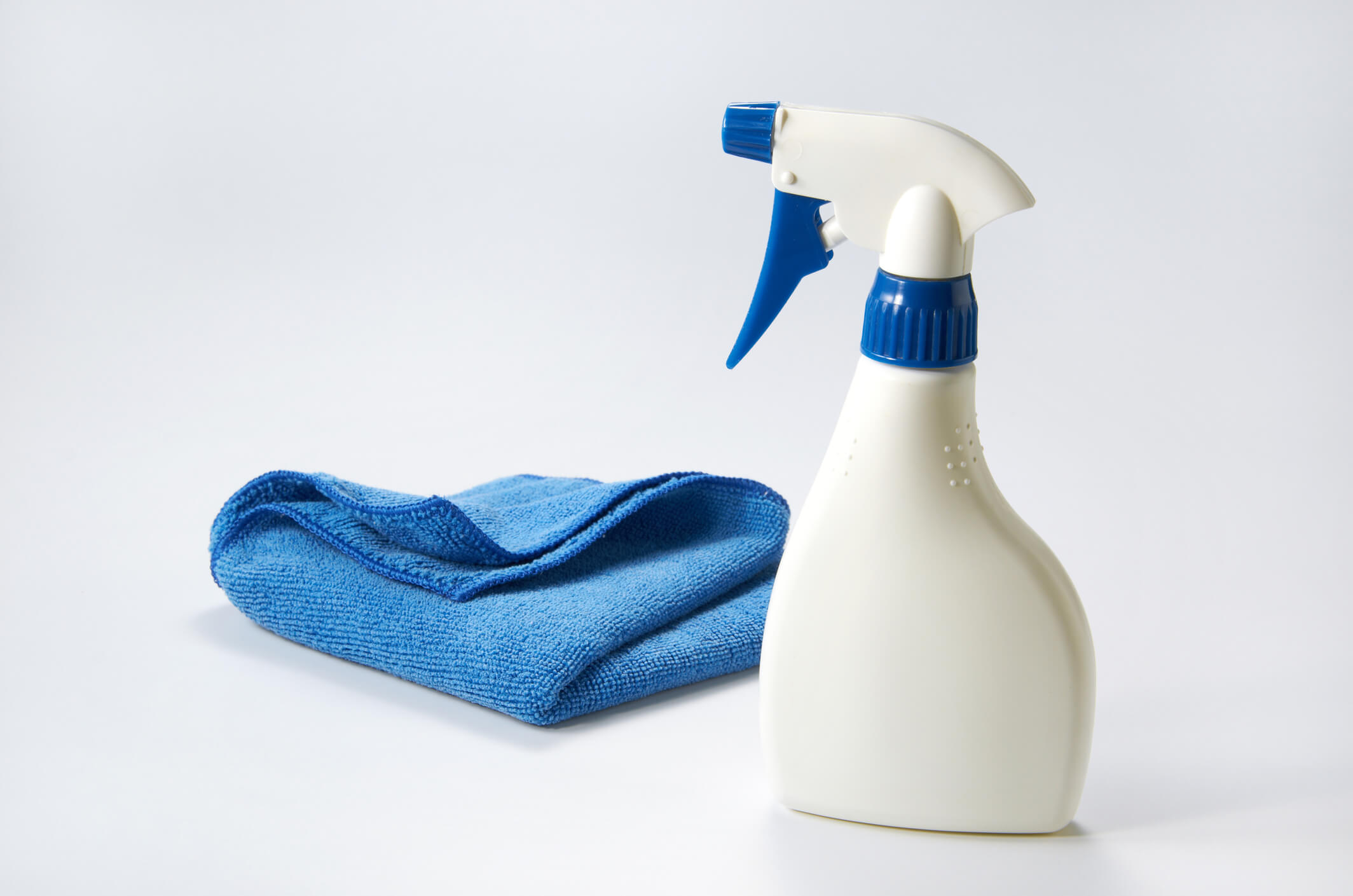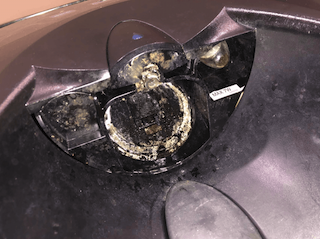Hypothetically speaking, when’s the last time your refrigerator had a good, hard, critically assessing look? The type of look that determines whether or not there’s a moldy refrigerator water dispenser in the house. It’s probably safe to assume that for most of us, it’s been a minute. If ever!
Hey, no judgment here!

Although that thought probably did create a slight moment of panic because there’s nothing ickier than a moldy refrigerator water dispenser. Just picture it: there you are, standing in your kitchen, grabbing a refreshing cup of water and living your best hydrated life. Then, you glance down into the cup as you’re about to take a sip and see greenish-blackish flecks floating around the glass…
First of all, YUCK. Second of all, you’re probably thoroughly traumatized. Third of all, that’s a huge health hazard!
A moldy refrigerator water dispenser could happen to anyone if that water spout isn’t properly taken care of. This Halloween-ish threat is why every refrigerator owner or renter has to up their cleaning game and make sure these dispensers of water (and sometimes ice) are kept free from mold growth and bacteria. That way, we can safely drink the water every doctor on the planet keeps telling us we need.
But, Why Does Mold Love My Refrigerator Water Spout?
It’s simple! Mold reproduces by creating microscopic spores and releasing them into the air.¹’² Over 100,000 species of mold have been identified so far, which equates to quite a lot of spores in the world. Because they’re microscopic, these spores live a pretty unassuming life. They’re just floating around, looking for a place to start growing or sticking to any surface they come into contact with. In fact, you probably encounter a few throughout your everyday routine and would never even know.
This abundance of spores is great for natural processes like decomposition, but not so great if they decide to try to free-load and start growing inside of our homes. Which can occur at any time.
As these spores leave the moldy nest, they’re on the hunt for a place they can call their own. Not unlike when a child ventures off into the world on their own for the first time and begins living their adult, solo life. Except, all a mold spore needs to start growing and living its mature life are four simple things.³
These ingredients for life include:
- Oxygen (they barely even require this, which is why mold can grow inside walls)
- Temperature (most species prefer 40-90 degrees Fahrenheit, but some are intense and can live in extremes)
- Food (they’re like teenagers-they eat anything and everything)
- Moisture (like humans, they too require that H2O)

When a mold spore blows right into our home, they don’t cause a ruckus unless they find a cozy little spot that ticks all four of those boxes. If they do find this dream location, they’ll settle in and start growing faster than this new trend of honking because the light just turned green. Seriously, it JUST turned green 0.007 seconds ago!
(A mold spore actually needs at least 24-48 hours to start growing, but you get the point.)
When a mold spore pictures what this fantastically perfect home will look like, that refrigerator water dispenser happens to be at the top of the list. Obviously, water is present and in abundance, which is usually the hardest piece of the puzzle to find. Oxygen and temperature aren't a problem. That leaves food, which can come in a few varieties: all of those yummy food particles kicked up during cooking, dust, mineral buildup from the water, sticky children's fingers, and cross-contamination from the glass or water bottle. See? It’s pretty much an episode of HGTV’s lottery dream homes!
Unfortunately, that leads to a moldy refrigerator water dispenser and some seriously irritated immune systems!
A Moldy Refrigerator Water Dispenser Is NOT What The Doctor Recommended
When a mold spore settles in for the long haul, it literally puts down roots and begins pumping more and more spores into the air. Again, not an issue in nature, but it’s a nightmare when it happens inside of a home.
All of those spores remain trapped within the walls of the home, circulating through that indoor air and sticking to surfaces like lint to a lint roller. Some species of mold are super try-hards and can also create microscopic toxins called mycotoxins that they release into the air along with those spores.⁴ These toxins just so happen to be naturally toxic to the body, so that’s a double strike against indoor mold growth.
Encountering a few mold spores throughout the day isn’t an issue. The immune system will descend in a flash and kick them to the curb. When there’s colonized mold pumping a huge number of spores into the indoor air you breathe in every day, that’s a large task for an immune system. Especially if there are mycotoxins present as well.

Eventually, the immune system may get bogged down and not be able to keep up with the influx of foreign particles or fritz out and start attacking healthy tissues in the body. No two people are the same, though, when it comes to reacting to mold exposure. Some may experience symptoms immediately, and others could live in a moldy home for years without much more than a runny nose every so often. You just never know. ⁵’⁶
Researchers are still attempting to determine exactly how mold exposure affects us, but it’s a tricky subject to nail down. Genetics, pre-existing conditions, length of exposure time, presence of mycotoxins, and species of mold all play a role. What they do know is that anyone with a compromised or developing immune system is at greater risk of developing symptoms faster and to a greater extent. ⁷’⁸
All of which is why it’s important to ensure a moldy refrigerator water dispenser is not a menace in our homes! While we can’t stop a spore from flying into the front door, we can reduce the number of moldy growth opportunities and actively work to remove any spores in the home. Because once they start growing, you’ve got a spore factory on your hands and the potential for some serious adverse health reactions.
Plus, no one wants to drink water with weird bits in it. It’s just gross.
Preventing a Moldy Refrigerator Water Dispenser Fiasco
It’s probably pretty safe to say that indoor mold growth and a moldy refrigerator water dispenser are things we all want to avoid, both for our health and for the ick-factor. Plus, one moldy location increases the chances of another rouge mold spore finding a second comfy place to start growing inside of our homes. We definitely do not want more than one moldy problem on our hands.
That means prevention is the name of the game and adding the refrigerator to our cleaning regime. So (rolls up sleeves), let’s channel our inner Cinderella and kick that fungus to the curb.

Monthly cleaning steps towards a mold-free dispenser include:
- Pull out that manufacturer’s manual to get a full breakdown of which parts can be removed and their suggestions on cleaning. Every fridge is different, and their developers know how to best tackle this cleaning extravaganza.
- Turn the water dispenser and ice maker (if applicable) off! You do not want to be attacked by a waterfall or a rogue piece of ice.
- Remove any removable pieces (double-check the manufacturer’s manual) and wash them in a two-step process. Spray and scrub down either with white vinegar or Benefact, then wipe this down with a microfiber cloth. Then, wash with warm water and soap, rinse, and air dry. Use a small brush like a toothbrush if needed to thoroughly clean all of the little cracks and crevices. If the ice maker is connected to the water dispenser, make sure to remove and clean the box and the location where the ice enters the fridge as well!
- Take a spray bottle of your cleaning solution and spray the heck out of every square millimeter of the unit. Super scrub every area you can reach, including the water nozzle itself. A small brush or pipe cleaner can help get into the super hard-to-reach places that mold loves. Some dispensers can click out and allow more access, but double check that manual before attempting to remove. Once thoroughly scrubbed, wipe down the entire unit with a microfiber towel. They’re 100 times better at wiping away small particles like mold spores. Afterward, you can spray it down with water or soapy water to remove any leftover vinegar and wipe it again.
- Allow everything to dry completely before replacing any removable parts. Don’t forget to turn the water and ice machine back on!
For the utmost cleanliness, this process should be done at least once a month or once every two months. That way, any rogue spores, mineral buildup, and foody particles are removed, and no colonized mold can settle in.
This monthly cleaning isn’t the only thing we should add to our routine, though, to avoid a moldy refrigerator water dispenser. We can also clean the water line once every 6-12 months!
Yes, this is kind of a pain, but it’s worth it to avoid yucky water. Just think about how dirty those hidden water lines can be... Maybe the water is coming out slower because it’s filled with mineral buildup and mold. Eeek!
Every refrigerator is different, so steps to cleaning the waterline will depend on the specific brand. That trusty manufacturer’s manual will give you the lowdown on what needs to be turned off, where it is, and how to do it.

Typically, cleaning the waterline will involve the following steps:
- Turn the water valve off so the water supply stops and disconnect the fridge from the power source.
- Remove all ice
- Disconnect the water line from the fridge and disconnect the ice maker line. Drain any water that’s inside of the lines.
- Fill the waterline(s) with white vinegar several times and leave it for at least ten minutes (tape it upright to the back of the fridge!). If there is an ice machine, turn it on so the vinegar cycles through.
- Pour out the vinegar solution once finished into a handy bucket and rinse the lines with water a few times.
- Remove and clean the reservoir by flushing it with vinegar water. Make sure to run clean water through it a few times after this to remove any lingering vinegar. You can click the water dispenser open to empty that line.
- Reconnect the water line, turn the power back on, and crank the water up! Which pretty much just means running water through the lines a bunch to clear them out.
- Turn the water valve back on.
Make sure to run the water dispenser quite a few times afterward to get rid of all the vinegar in the lines and make sure you and your family don’t drink vinegary water. Also, toss the first few batches of ice as well, for the same reason! To knock out two birds with one stone, you can time your dispenser cleaning with the water line cleaning so that the water is extra clean.
Again, this is just one example of how to clean out the water lines, but the manufacturer’s manual will give you a solid idea of what needs to be done for your specific refrigerator.
The last tip is to change the water filter as recommended! These filters help remove contaminants and will help make sure your fridge is operating at its best.
Following all of these cleaning steps will work wonders in helping ensure a moldy refrigerator water dispenser only exists in those traumatizing pictures online. Not in our homes!

Ah!!! There’s MOLD!
You could do all of this and still find mold at some point, and that’s okay! This fungus among us is harder to avoid than former high school classmates at the grocery store when you are looking less than your best.
Sometimes, a spore just gets super lucky and starts to grow, creating a moldy refrigerator water dispenser. When this happens, complete the steps above, but the scrubbing, flushing, soaking, and wipedown processes should be done at least three times to remove as many mold, mycotoxins, and bacteria particles as possible.
Once established, it’s difficult to remove, so clean it thoroughly and keep an eye out to see if the mold grows back quickly. If this occurs, it’s time to call a professional so that you and your family aren’t drinking mold and experiencing the effects of exposure.
The Elixir of Life
Water is pretty important for life. Not just for plants, but for humans too. Most of us could only survive three days without it. Prooobably because water makes up more than 60% of our bodies.
That being said, when your body wakes you up in the dead of night with a dire need for a glass of water, it’s probably not looking for H2O out of a moldy refrigerator water dispenser. To keep our bodies happily hydrated, our health in top shape, and our indoor environment safe, we’ve got to stay vigilant about making sure mold doesn’t manage to sneak in. This includes paying attention to places like the water spout!
Mold-free water is definitely what the doctor recommended. Now if we could just keep up with how many ounces they suggest drinking every single day. Why does life always make that goal so difficult?!

Citations:
- Environmental Protection Agency. (n.d.). Mold. EPA. Retrieved from https://www.epa.gov/mold.
- Centers for Disease Control and Prevention. Basic facts about mold and dampness. Centers for Disease Control and Prevention. Retrieved from https://www.cdc.gov/mold/faqs.htm.
- Lstiburek, J., Brennan, T., & Yost, N. (2002, January 15). Rr-0208: What you need to know about mold. Building Science Corporation. Retrieved from https://www.buildingscience.com/documents/reports/rr-0208-what-you-need-to-know-about-mold/view.
- World Health Organization. (n.d.). Mycotoxins. World Health Organization. Retrieved from https://www.who.int/news-room/fact-sheets/detail/mycotoxins.
- Environmental and Occupational Health Assessment Program, & Environmental and Occupational Health Assessment Program, & Health Science Section, Mold Basics for Primary Care Clinicians (2009). Hartford, CT; Connecticut Department of Public Health. , H. S. S., Mold Basics for Primary Care Clinicians 1–10 (2009). Hartford, CT; Connecticut Department of Public Health.
- Curtis, L., Lieberman, A., Stark, M., Rea, W., & Vetter, M. (2004). Adverse health effects of indoor molds. Journal of Nutritional & Environmental Medicine, 14(3), 261-274.
- Bush, R. K., Portnoy, J. M., Saxon, A., Terr, A. I., & Wood, R. A. (2006). The medical effects of mold exposure. Journal of Allergy and Clinical Immunology, 117(2), 326-333
- Fisk, W. J., Lei-Gomez, Q., & Mendell, M. J. (2007). Meta-analyses of the associations of respiratory health effects with dampness and mold in homes. Indoor air, 17(4), 284-296.

